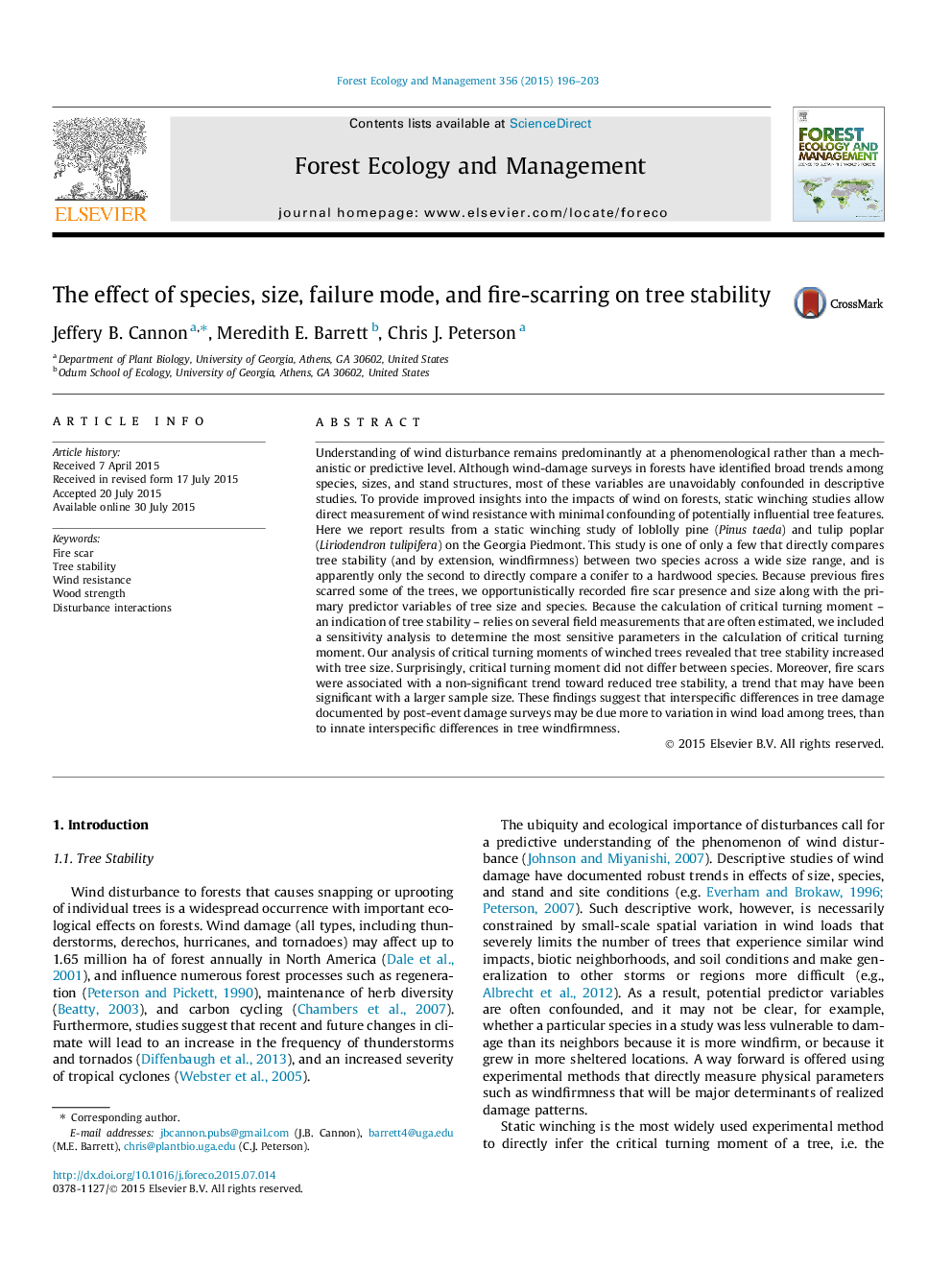| کد مقاله | کد نشریه | سال انتشار | مقاله انگلیسی | نسخه تمام متن |
|---|---|---|---|---|
| 86200 | 159171 | 2015 | 8 صفحه PDF | دانلود رایگان |
• Forest disturbances such as wind and fire have large impacts on forests and may interact to influence tree stability.
• This study evaluates how tree size, species, and disturbance history affect tree stability.
• Tree stability increases with tree size with no difference between study species.
• Tree stability was 17% lower in uprooted trees than snapped trees.
• Fire-scarring may lead to higher incidence of uprooting in previously disturbed forests.
Understanding of wind disturbance remains predominantly at a phenomenological rather than a mechanistic or predictive level. Although wind-damage surveys in forests have identified broad trends among species, sizes, and stand structures, most of these variables are unavoidably confounded in descriptive studies. To provide improved insights into the impacts of wind on forests, static winching studies allow direct measurement of wind resistance with minimal confounding of potentially influential tree features. Here we report results from a static winching study of loblolly pine (Pinus taeda) and tulip poplar (Liriodendron tulipifera) on the Georgia Piedmont. This study is one of only a few that directly compares tree stability (and by extension, windfirmness) between two species across a wide size range, and is apparently only the second to directly compare a conifer to a hardwood species. Because previous fires scarred some of the trees, we opportunistically recorded fire scar presence and size along with the primary predictor variables of tree size and species. Because the calculation of critical turning moment – an indication of tree stability – relies on several field measurements that are often estimated, we included a sensitivity analysis to determine the most sensitive parameters in the calculation of critical turning moment. Our analysis of critical turning moments of winched trees revealed that tree stability increased with tree size. Surprisingly, critical turning moment did not differ between species. Moreover, fire scars were associated with a non-significant trend toward reduced tree stability, a trend that may have been significant with a larger sample size. These findings suggest that interspecific differences in tree damage documented by post-event damage surveys may be due more to variation in wind load among trees, than to innate interspecific differences in tree windfirmness.
Journal: Forest Ecology and Management - Volume 356, 15 November 2015, Pages 196–203
